Modern ceramics has a holy trinity: three traditions that have dominated the discipline for over a century. The first is Japanese ceramics, particularly wares associated with the tea ceremony, which possess a sort of perfect imperfection, easy to appreciate but difficult to master. Second, the rationalism of the Bauhaus, oriented toward clarity, geometry, and directness of form. And finally, Abstract Expressionism, with its individualism, gesture, and dramatic intensity.

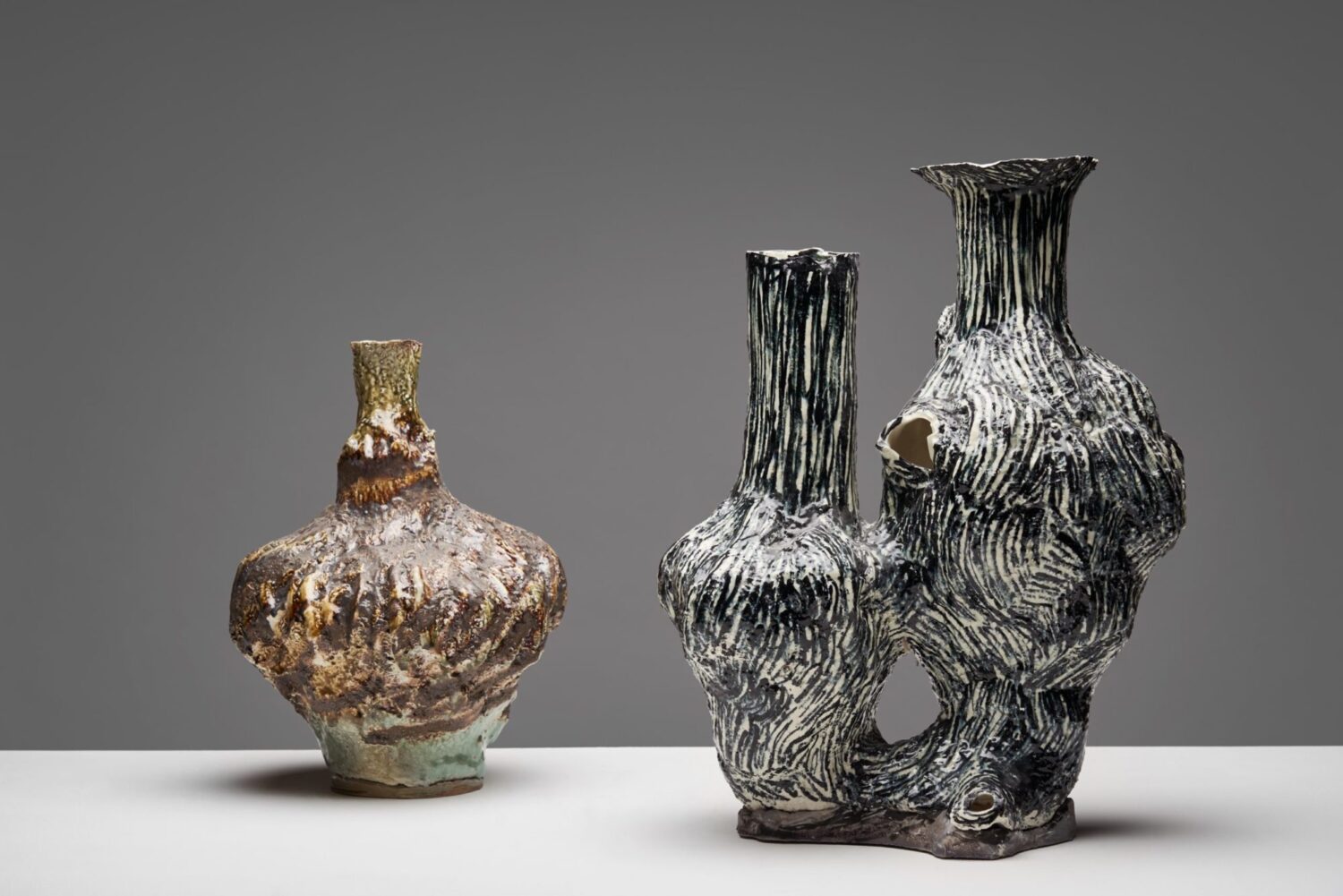
Imagine these three streams coursing into the just-arriving present, then joining into a single mighty flow, and you will begin to understand the work of Johannes Nagel. He has been influenced by them all, via a curious geographical and professional itinerary.
Though born in Jena, he received his initial training in Quebec, under the Japanese potter Kinya Ishikawa. It was a fortunate first connection, for his teacher gently steered him away from narrow perfectionism. (‘I’m the one who criticizes your work,’ he remembers Ishikawa saying. ‘You should just be enthusiastic.’)
At this early stage, Nagel was sufficiently entranced by Japanese aesthetics that he even considered apprenticing with Warren McKenzie, the leading exponent of Japanese-derived aesthetics in America. Instead, he ended up returning to Germany, studying at the University of Art and Design in Halle, where he has been based since. It was at this point that Nagel began learning about Bauhaus precedent – the crisply delineated forms of Otto Lindig and Marguerite Wildenhain, often conceived with an eye toward serial production.
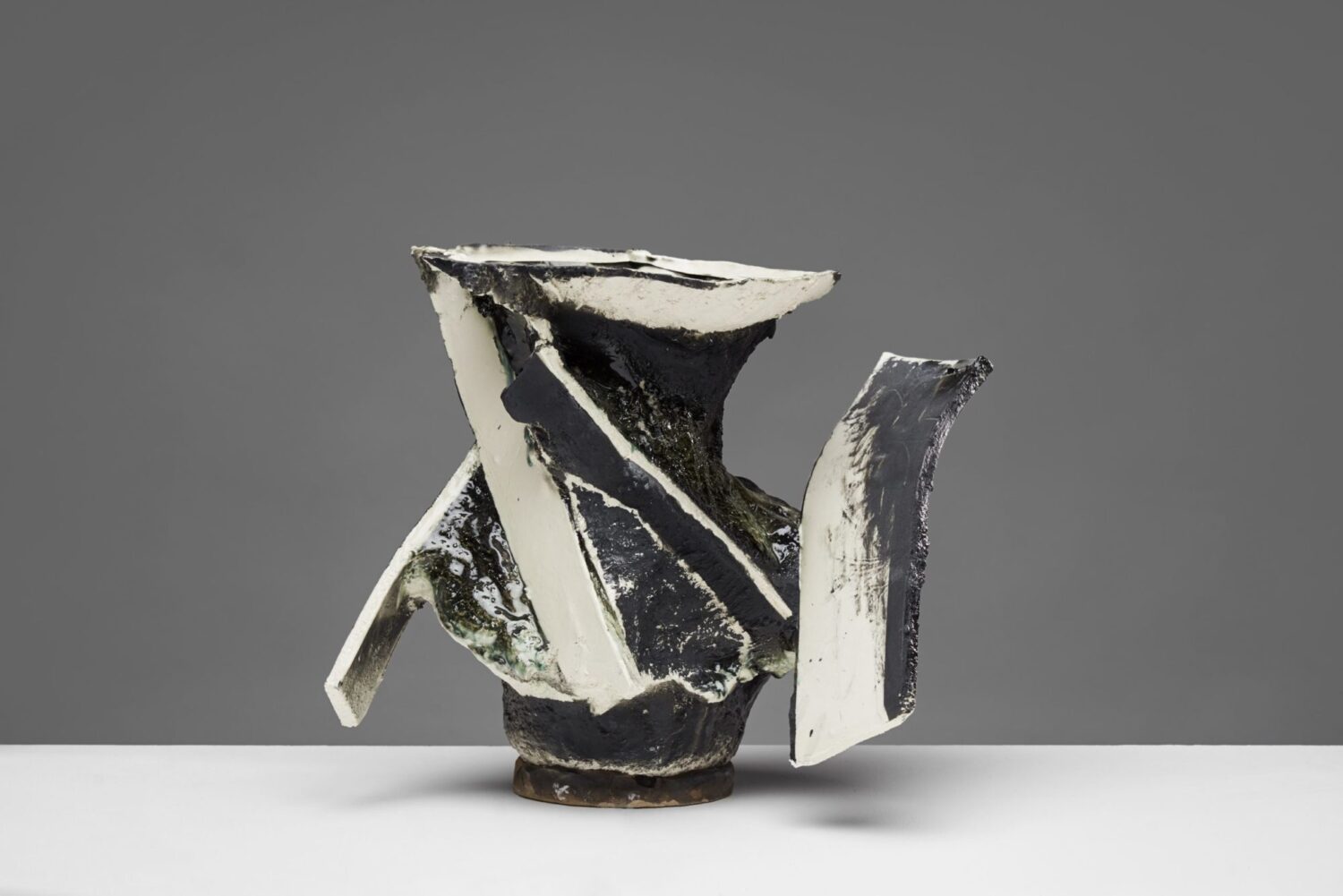
In the postwar era, this formalist strand had been carried forward by figures like Beate Kuhn in West Germany, while in the East (where Halle is located), there was a pronounced tendency toward figuration, under the leadership of Gertraud Möhwald. (Most of the older ceramists that Nagel encountered in Halle were students of Möhwald.)
At a time when explicitly political art was verboten, ceramics could fly under the radar of official Communist censorship, expressing a haunting existentialism with tacitly political implication. To this already dynamic mix of influences, Nagel soon added the ideas of the California clay revolution of the 1950s and ‘60s, as exemplified by Peter Voulkos and Jun Kaneko. Inclined even in his early career toward loose and experimental work, Nagel gravitated to this precedent, taking on its muscular abstraction and improvisatory composition.
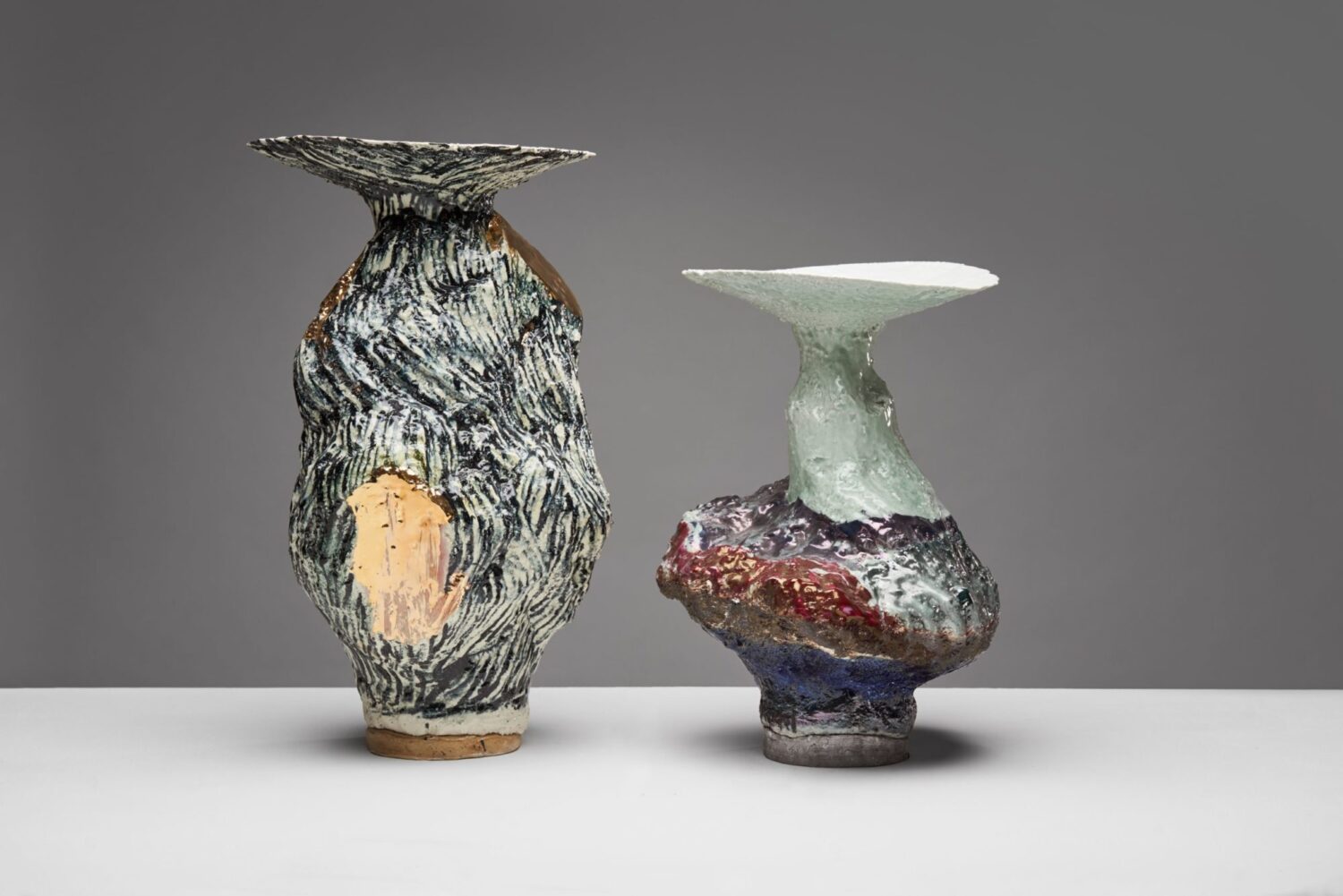
He came to understand how ‘energy could be stored in the clay,’ and how familiar forms – handles, rims, spouts – could be transformed through sculptural intelligence. Speaking of transformation – it is one thing to be exposed to multiple precedents; another to try to merge them; a third still to build something new, making one’s influences more than the sum of their parts.
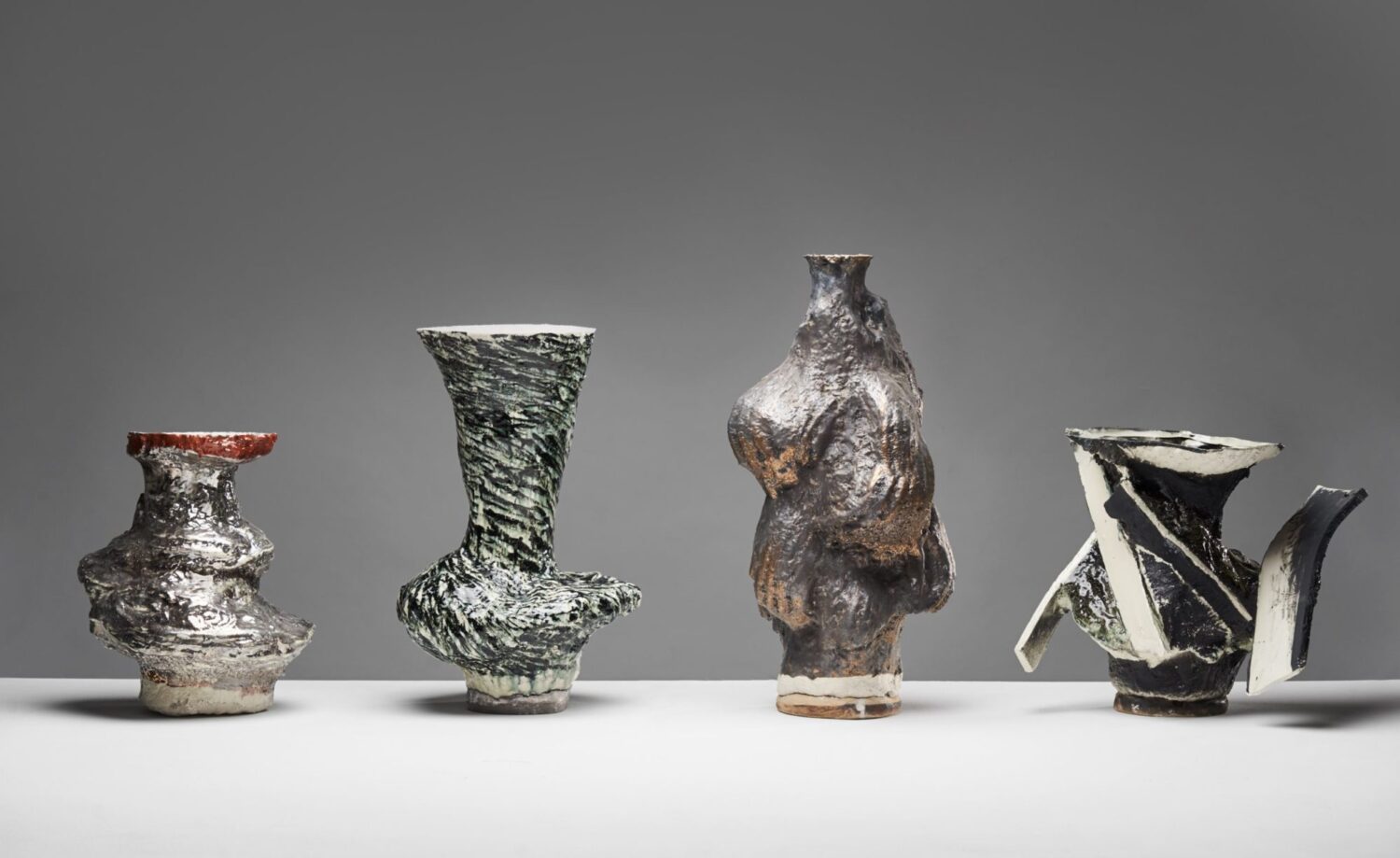
This has been Nagel’s achievement, as this exhibition at Taste Contemporary (March 18 – April 25, 2021) makes abundantly evident. His crucial breakthrough came when he began experimenting with sand-casting. Well known to metalsmiths, this technique is not commonly used in ceramics (who typically use plaster molds).
Nagel had briefly flirted with the process more than a decade ago, but it was only relatively recently that he began a deeper exploration of its possibilities. At a certain level, his technique is simple: he digs a hole in a box of sand, fills it with liquid slip, and then, after allowing some drying time, allows the extra slip to run out of the bottom.
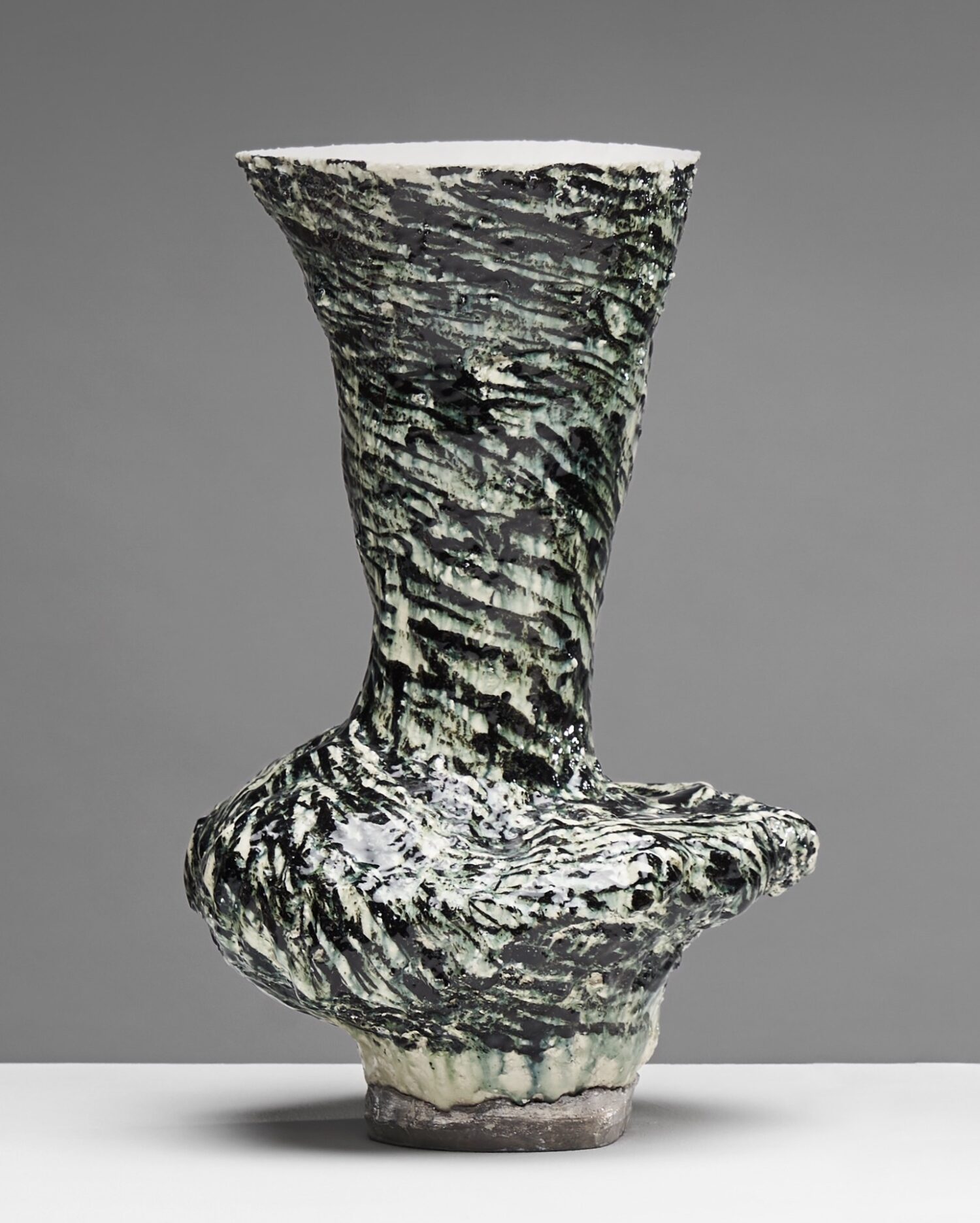
Enough clay clings to the interior of the mold that he is left with a thin-walled object, which traces the interior volume of the shape he has excavated. Typically, Nagel uses this unorthodox means to fashion volumes within the familiar typology of the vase. But as he works, he follows his instincts, departing from predictable pot-shapes that could be envisioned in the mind. Unlike wheel-throwing, the more traditional means of rapidly forming clay, his works of course need not be symmetrical.
He has been able to find forms that are novel, lopsided, strange. Seamless and complete, they have the quality of things born, not made. Nagel chose the fitting name Stegreif – ‘improvisation’ – for one series of these sand-cast pieces, underlining the importance of instinct in their creation. Yet he acknowledges that ‘the hands learn very quickly, and the innocence is soon gone.’
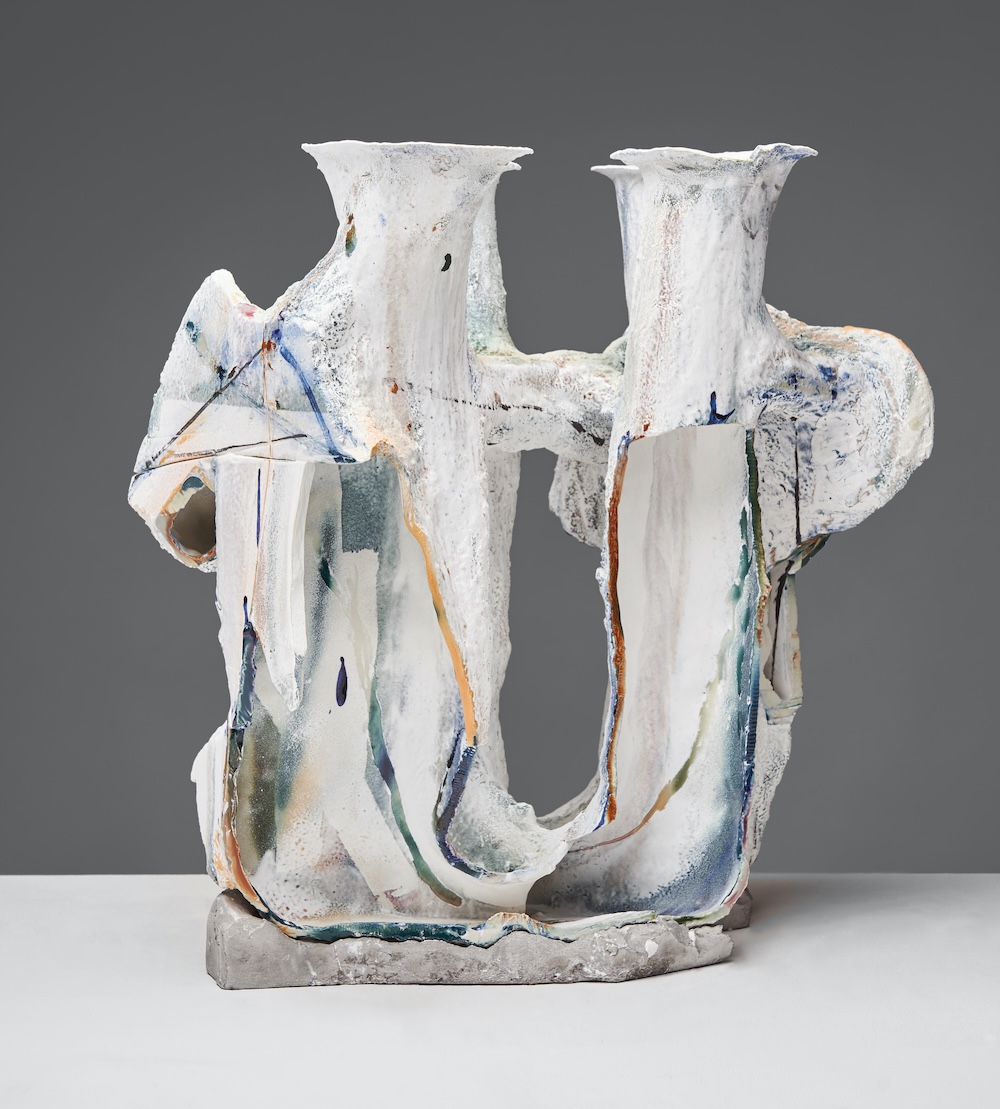
So, he has pushed himself to expand his vocabulary. He has, for example, placed flat plaster bats at the end of some of his tunnels, so that the amorphous shape is intersected by a rigid plane. And – in a particularly generative move – he has dug interconnected channels into the sand, like a network of animal burrows. Once cast into positive, the hollow spaces become complex openwork compositions. One of these latter sculptures, Tangled Construction/White, calls to mind a group of dancers, hands joined. The same work exemplifies the subtlety of Nagel’s surfaces, which are extensively worked after the casting is complete.
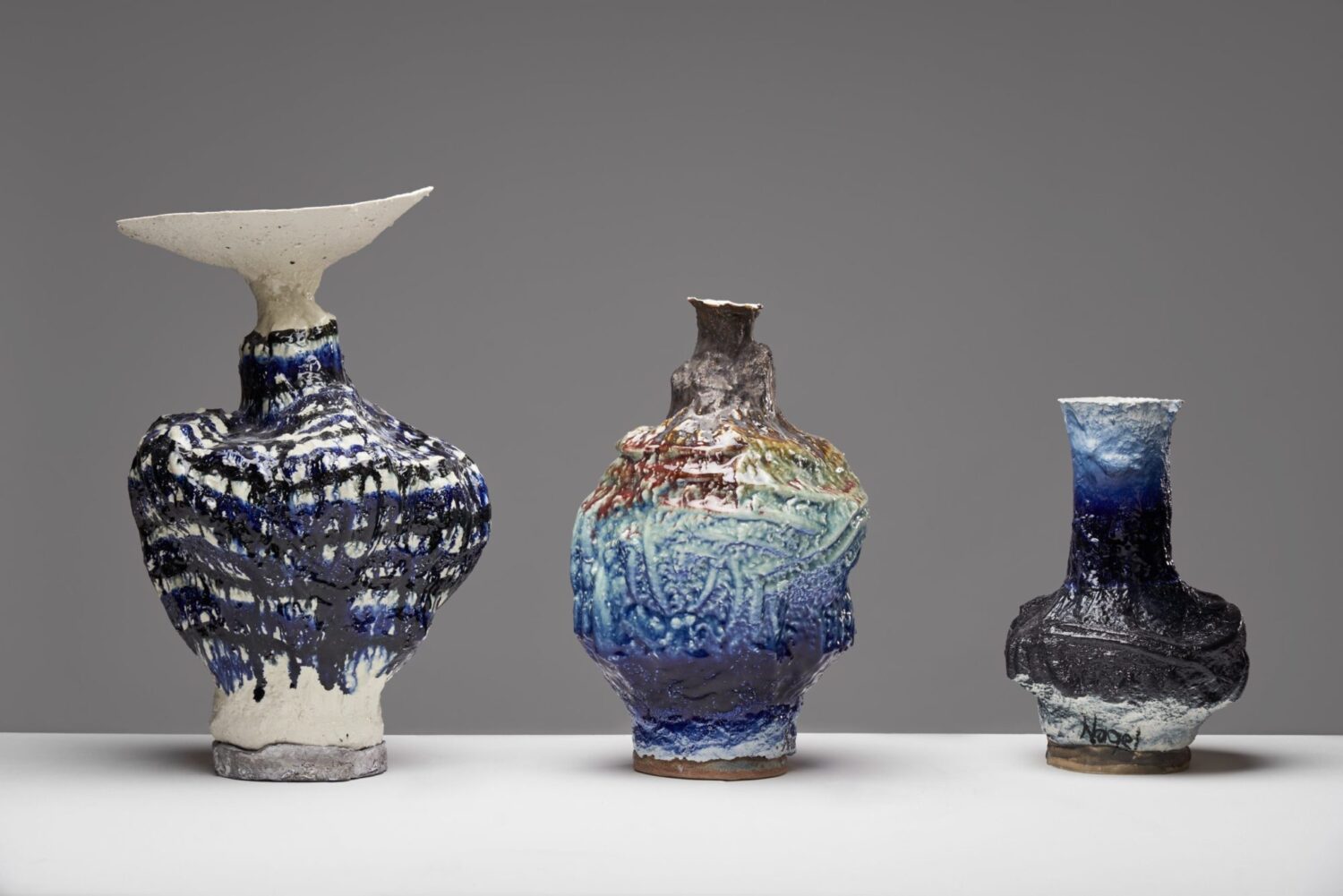
While essentially monochrome, Tangled, features a range of mark-making and textural variation: attenuated strokes of yellow and red tracing the object’s contours; drifts of cobalt blue glaze; and a slim gray pedestal, on which the work rests. Other works included in the present exhibition feature a diversity of different surface effects.
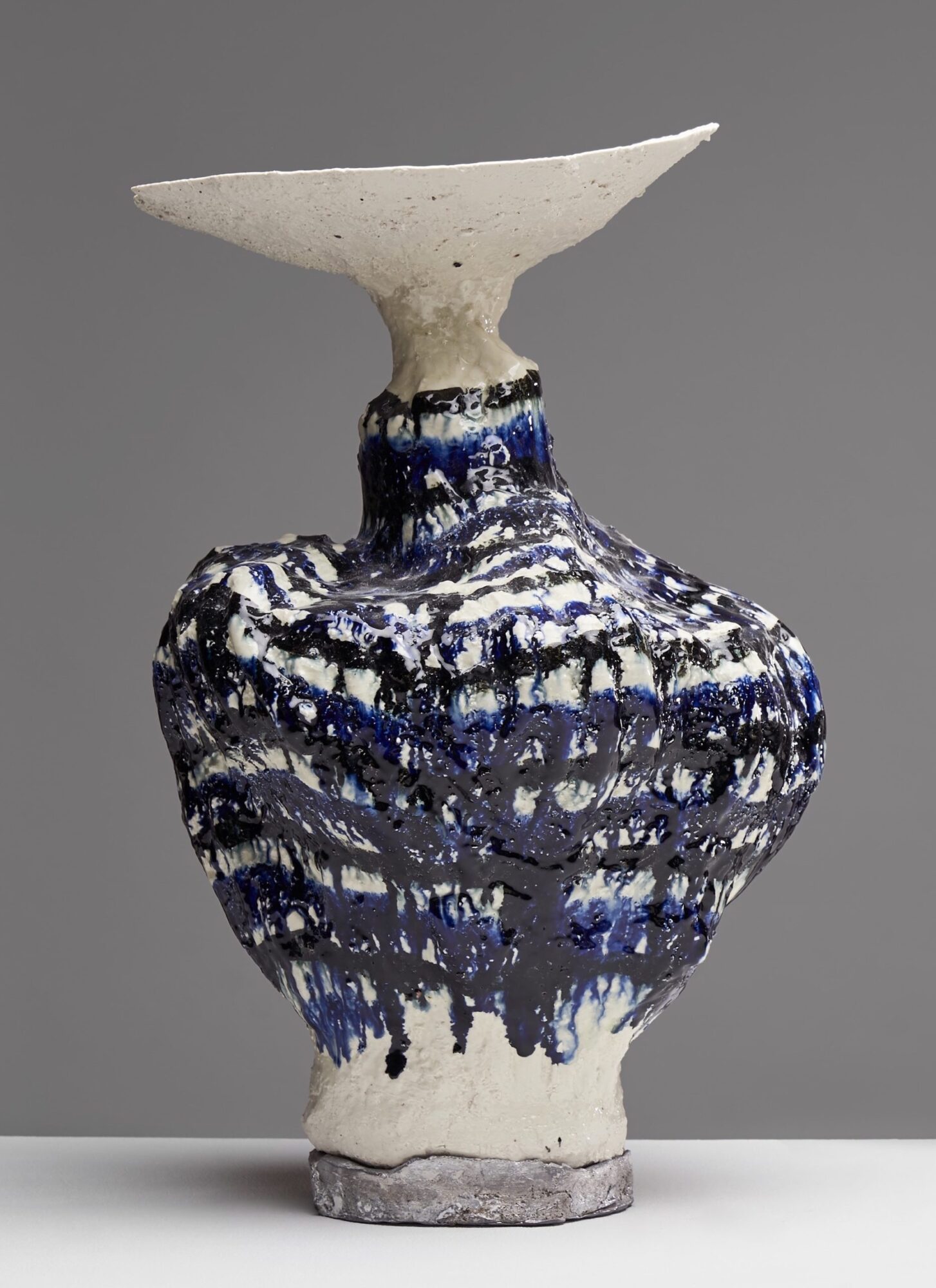
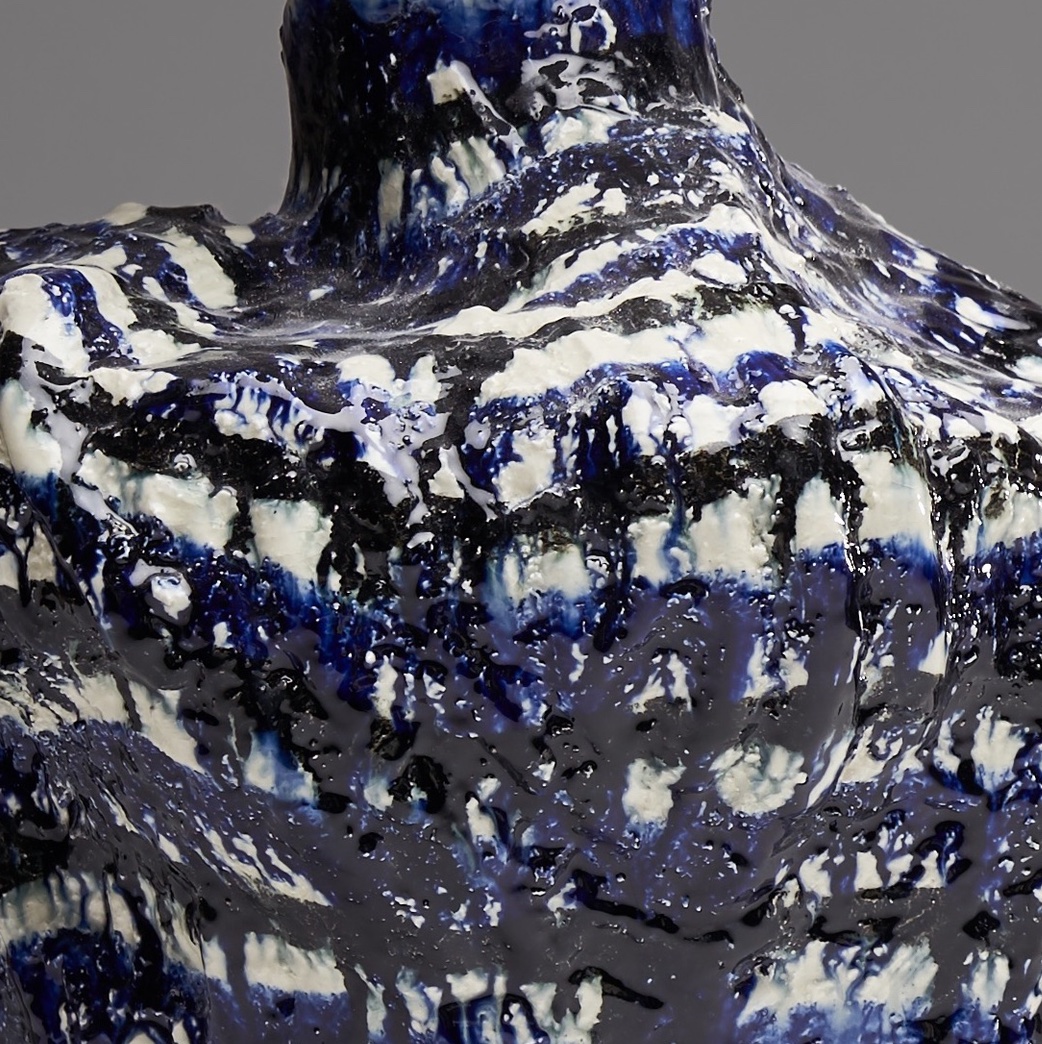
Nagel often scores the whole exterior of a pot in whorled patterns, somewhat like finger prints; glazing brings the topology into visual relief. A piece called Coloured Construction is painted in a patchwork of hazy polychrome; it would seem to answer in the affirmative a question that Nagel has asked himself: ‘can a sculpture be blurry?’ And in the series, Lust for Lustre, he combines celadon – the blue-green glaze hallowed in the Chinese tradition – with metallic lustre glazes, more readily associated with European Art Nouveau. It’s a good example of the way that Nagel re-mixes ceramic history, acknowledging its vastness while also making it his own.
As he digs deeper, both literally and figuratively, he is finding new ways to explore his medium’s history: an archaeological aesthetic, in which the hole is itself the key finding. This observation takes us back where we began, to Nagel’s handling of his primary influences. Looking at his assembled work, you will catch sight of the wonky asymmetries seen in the Japanese tradition; the strong silhouettes of the Bauhaus; the painterly vigor of Voulkos and Kaneko.
These signals only come through fitfully, like radio transmissions tuned in during a storm, emerging into legibility, then receding again into an overall impression of energetic flux. The metaphor of a dance again seems appropriate, here: a triadic ballet, to borrow the title of a famous Bauhaus collaboration, in which previously antithetical tendencies make discordant yet beautiful music together.
Nagel’s work is anything but still, then. Even so, it can profitably be viewed in relation to the genre of still life, which is always just around the corner where ceramics are concerned. Think, when looking at his groupings of objects, of the paintings of Giorgio Morandi; or, when examining his atypically aggressive Armoured Vase, of early Cubism. Like all the most accomplished contemporary artists working in clay – Andrew Lord, Rebecca Warren, and Arlene Shechet come to mind – Nagel makes objects that assert themselves in space, yet are also pictorial, sitting at the junction between fact and fiction. At this upper echelon of achievement, the conventional lines between disciplines fall away, established idioms yielding to the force of creation itself. ‘If I had to place myself,’ Nagel says, ‘I would be somewhere in between’.
View the exhibition catalogue here.
Essay by Glenn Adamson
Images by Tom Dachs
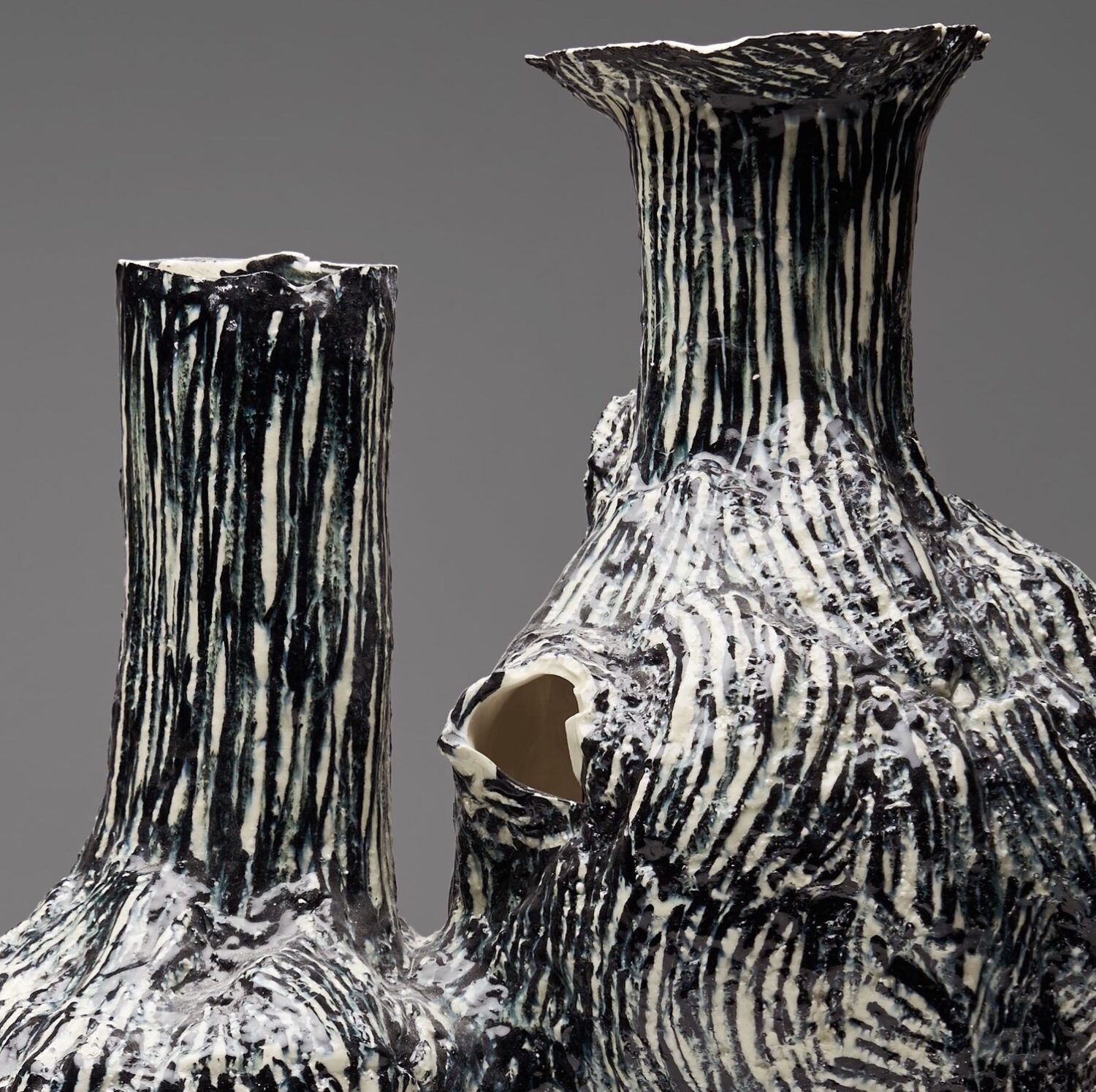
Tangled Construction top piece. Thanks CFile and Glenn
Thank you for this eloquent and original way to think about Johannes Nagel’s work. He is an exceptional, still under-appreciated artist — and Adamson is always thought provoking. A great combo!